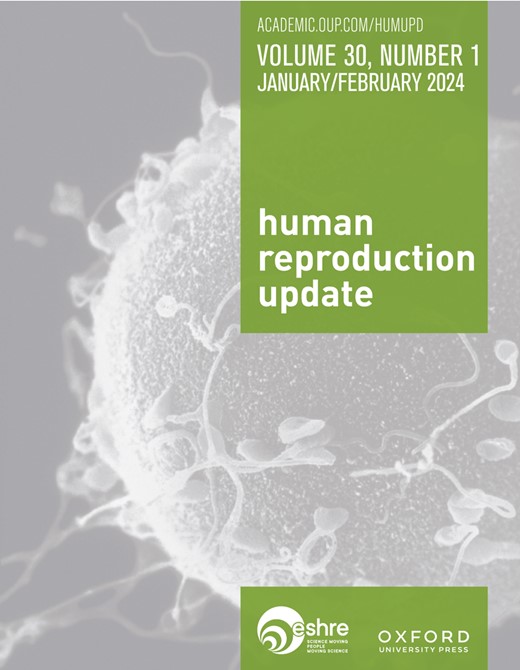Transcriptional control of human gametogenesis
IF 14.8
1区 医学
Q1 OBSTETRICS & GYNECOLOGY
引用次数: 4
Abstract
ABSTRACT The pathways of gametogenesis encompass elaborate cellular specialization accompanied by precise partitioning of the genome content in order to produce fully matured spermatozoa and oocytes. Transcription factors are an important class of molecules that function in gametogenesis to regulate intrinsic gene expression programs, play essential roles in specifying (or determining) germ cell fate and assist in guiding full maturation of germ cells and maintenance of their populations. Moreover, in order to reinforce or redirect cell fate in vitro, it is transcription factors that are most frequently induced, over-expressed or activated. Many reviews have focused on the molecular development and genetics of gametogenesis, in vivo and in vitro, in model organisms and in humans, including several recent comprehensive reviews: here, we focus specifically on the role of transcription factors. Recent advances in stem cell biology and multi-omic studies have enabled deeper investigation into the unique transcriptional mechanisms of human reproductive development. Moreover, as methods continually improve, in vitro differentiation of germ cells can provide the platform for robust gain- and loss-of-function genetic analyses. These analyses are delineating unique and shared human germ cell transcriptional network components that, together with somatic lineage specifiers and pluripotency transcription factors, function in transitions from pluripotent stem cells to gametes. This grand theme review offers additional insight into human infertility and reproductive disorders that are linked predominantly to defects in the transcription factor networks and thus may potentially contribute to the development of novel treatments for infertility.人类配子发生的转录控制
配子发生的途径包括精细的细胞特化,伴随着基因组内容的精确分配,以产生完全成熟的精子和卵母细胞。转录因子是一类重要的分子,在配子体发生中调节内在基因表达程序,在指定(或决定)生殖细胞命运和协助指导生殖细胞完全成熟和维持其种群中发挥重要作用。此外,为了在体外强化或重定向细胞命运,转录因子最常被诱导、过度表达或激活。许多综述都集中在配子发生的分子发育和遗传学上,在体内和体外,在模式生物和人类中,包括最近的几篇综合综述:在这里,我们特别关注转录因子的作用。干细胞生物学和多组学研究的最新进展使人们能够更深入地研究人类生殖发育的独特转录机制。此外,随着方法的不断改进,生殖细胞的体外分化可以为强大的功能增益和功能丧失遗传分析提供平台。这些分析描述了独特和共享的人类生殖细胞转录网络成分,这些成分与体细胞谱系指示物和多能性转录因子一起,在多能干细胞向配子的转变中起作用。这一宏大的主题综述为人类不孕症和生殖疾病提供了额外的见解,这些疾病主要与转录因子网络缺陷有关,因此可能有助于开发新的不孕症治疗方法。
本文章由计算机程序翻译,如有差异,请以英文原文为准。
求助全文
约1分钟内获得全文
求助全文
来源期刊

Human Reproduction Update
医学-妇产科学
CiteScore
28.80
自引率
1.50%
发文量
38
期刊介绍:
Human Reproduction Update is the leading journal in its field, boasting a Journal Impact FactorTM of 13.3 and ranked first in Obstetrics & Gynecology and Reproductive Biology (Source: Journal Citation ReportsTM from Clarivate, 2023). It specializes in publishing comprehensive and systematic review articles covering various aspects of human reproductive physiology and medicine.
The journal prioritizes basic, transitional, and clinical topics related to reproduction, encompassing areas such as andrology, embryology, infertility, gynaecology, pregnancy, reproductive endocrinology, reproductive epidemiology, reproductive genetics, reproductive immunology, and reproductive oncology. Human Reproduction Update is published on behalf of the European Society of Human Reproduction and Embryology (ESHRE), maintaining the highest scientific and editorial standards.
 求助内容:
求助内容: 应助结果提醒方式:
应助结果提醒方式:


